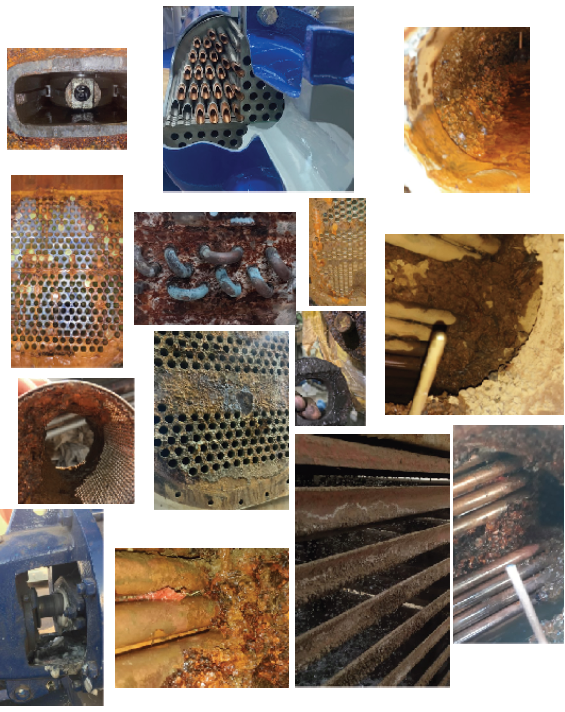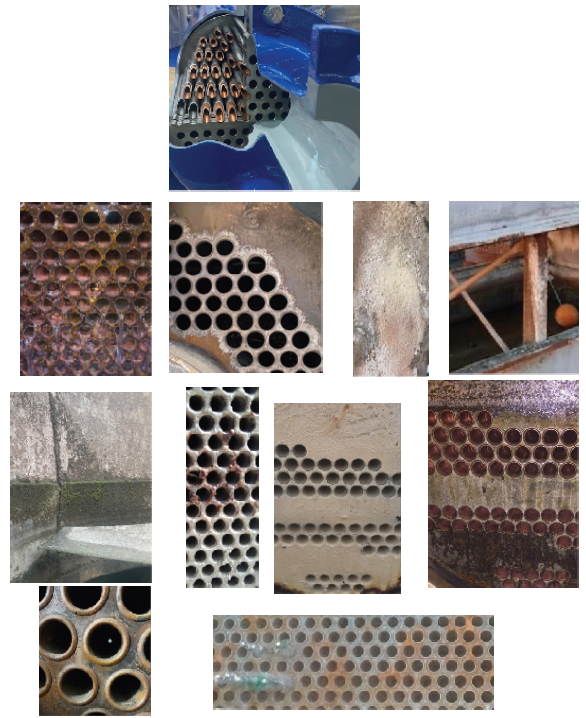تحليل المياه

The nature of analytical chemistry
Structural information about a complex compound can be obtained either by preparing it from some simple constituents
or by breaking it chemically into smaller and simper units and then identifying them.
Qualitative and Quantitative Analysis
Chemical analysis can have two aspects, qualitative and quantitative Qualitative analysis aims at identifying constituents of a given system such as presence of different compounds in a mixture or of different elements in a compound.
Generally we can use qualitative analysis to know if we have a problems, treatment
or not.
But quantitative analysis can define the volume of problems or define if amount of treatment enough.
Quantitative analysis is concerned with the determination of amounts of different
constituents present in a system.
Usually the given material is first analyzed qualitatively and this is followed by
quantitative analysis.
Analysis, Determination and Estimation
Some authors make a distinction between determination and analysis.
Determination usually refers to the measurement of a single constituent in a relatively simple specimen; such as, determination of barium in a given solution of barium chloride.
Analysis referred to a more detailed and complete process which may involve collection of material, preparation of sample solution, identification of its various constituents, planning to determine these constituents keeping in view the composition of the material, separation of the interfering substances and selection of suitable methods for determining different constituents. For example, the analysis of
a specimen of a rock or an ore.
According to some authors,
the term estimation implies a rough measurement and they prefer to use the term determination to estimate the treatment or problem behavior in future.
There are many other classification of analysis such as inorganic and organic, major
and minor…etc.
water analysis and monitoring
The first practical requirement in water analysis.
- Observation
- The water quality required depends on the purpose.
- acceptance criteria.
- Sample collection
- Sample handling
- Sample preparation
- Calculations & units

Measurement of Physical properties
1. Temperature
by means of a mercury thermometer. For the The temperature of surface water can be readily measured temperature special devices are used.
2. Color
The color of water sample is compared with known color standards. If the sample is turbid, the turbidity should be removed as it may interfere with the color judgement.
3. Odour.
The sample is diluted with odour free water until a least perceptible odour is detected. The extent of dilution is a parameter for odour.
4. Turbidity
This is due to the presence of fine particles in the sample.
This property is measured by means of a nephelometer. The turbid sample is illuminated by means
of light and the light scattered by the particles is measured in a direction at right angles to that of
the incident light. The intensity of the scattered light is proportional to the turbidity. The turbidity
of the sample is compared with that of a standard turbidity suspension.
5.Density,
viscosity and surface tension. In certain samples the measurement of these properties is also useful.
6.Conductivity.
The conductivity of water sample is due to the presence of various kinds of ions. Hence the
measurement of conductance is a measure of the amount of different kinds of ions present in the
sample.
7. pH
This terms is defined as pH. If for the sample
pH=7, sample is neutral
pH more thank 7 .. alkaline
pH less than 7 …acidic
8. total solid. (TS).
A silica crucible is heated to about 550 to 600 °C for about half an hour, cooled in a desiccator and
then weighed. This pro. cess of heating, cooling and weighing is repeated until a constant weight is
obtained. Then V c.c. of the unfiltered water sample is taken in the crucible and evaporated on a
water bath. The solid residue is heated, cooled in a desiccator and then weighed. This process is
repeated until a constant weight is obtained. The difference in two weights gives the weight of solid
(W g) obtained from the evaporation of V c.c. of sample.
V c.c. of sample contains w x1000 mg residue.
9.Total dissolved solids. (T.D.S.).
This is determined by a similar method as described for the determination of total solids. The only
difference is that in this case we take V c.c. of filtered water sample.
10.Total suspended solids. (T.S.S.).
The amount of suspended solid of particulate matter can be obtained by subtracting total dissolved
solid from total solids, that is
T.S.S. - T.S. - T.D.S
Observation
An observation is any information that is gathered with the senses. Our senses include vision and smell. Very important for chemical reaction. We can see many defects such as corrosion , scale… with our eyes or smell something wrong.
The water quality required depends on the purpose.
Parameters that are frequently sampled or monitored or water quality include physical, chemical properties and treatment is a procedure usually done by system manufacture.
Sample collection
There are minimum data required for most water samples are Name of the water system, Location of the station or site, Point of collection, Date of collection, Time of collection, Gage height or water discharge, Temperature of the water, Weather and other natural or manmade conditions that may assist.
This a vital information for sample analysis.
Sample preparation
Clean bottle, in some cases keep a sample in cooler or in stable temperature, immediate delivery or shipment to the laboratory. Sample volume , hot plat or microwave digestion also required for some analysis, volatile gases should analyzed on site…etc.
Instrument theory
UV



Atomic Emission spectroscopy

X-Ray fluorescence

Chromatography
Chromatography is the separation of analyte species using a com- bination of a mobile phase and a stationary phase. The analytes will spend different amounts of time in each of the two phases according to their affinities for each phase
He named the methodology after the Greek words chroma (color) and graphein (to write) to form chromatography. Today, chromatography has taken on many forms including liquid column chromatography (LC), high-performance/pressure liquid chromatography (HPLC), flash chromatography (FC), paper chromatography, TLC, supercritical fluid chromatography (SFC), and gas chromatography (GC), all having their own unique advantages for separating analytes of interest.
TOC

Titration
It has already been mentioned that the methods of quantitative analysis can be divided into two categories.
The quantitative procedures which make use of instruments, such as a colorimeter, a conductivity bridge or a potentiometer etc., are classified under instrumental or physicochemical methods of analysis.
Gravimetric and volumetric methods constitute what is known as the classical chemical analysis.
The final or the measurement step of a volumetric method is the measurement of volume. Volumetric methods can be divided into the following three types depending on whether the volume of a gas or that of a soln is measured.
Titration
Titrimetric analysis. Suppose we are a sol of substance (called analyte) and we have to find out its concentration, This can be done by gradually adding soln of another substance (called reagent) until the reaction between the analyte and the reagent is
just complete. It we know :
- chemical equation representing the reaction between the analyte and the
- reagent,
- the volume of the sample soln taken,
- the concentration of the reagent soln, and
The volume of the reagent sold required for complete reaction, then the concentration of the sample soln can be calculated.
Such methods are known as titrimetric methods. These methods are simple and rapid as compared to gravimetric methods, hence titrimetric methods are extensively ueed for the determination of a large number of organic, inorganic and most of chemical compounds.
Corrosion Rate

Samplers Steam & Water CORROSION MONITORING The control and prevention of corrosion are primary concerns of water chemists in the cooling and heating system. corrosion can result in serious equipment failures. Of equal importance, the deposit of corrosion products in the system or boiler can significantly reduce both capacity and efficiency of the plant.
Test paper
Test range of products covers everything from simple pH testing, water analysis, production processes and measurements of special water parameters.
The use of rapid tests play a very important role when analysing solutions, be it, for sits, research and development, utilities or other specialist industries.
The main advantages of test paper we can use it as qualitative analysis such as presence of different compounds or element and defects. Also we can use it as quantitive analysis for less accuracy results needed. And also for rapid test needed on sits.
References
Analytical chemistry theory and practice, Analytical chemistry A chemist and laboratory,
Application report water analysis instrument, water sample collection.
حقوق الطبع والنشر © Raduis AK, جميع الحقوق محفوظة.



